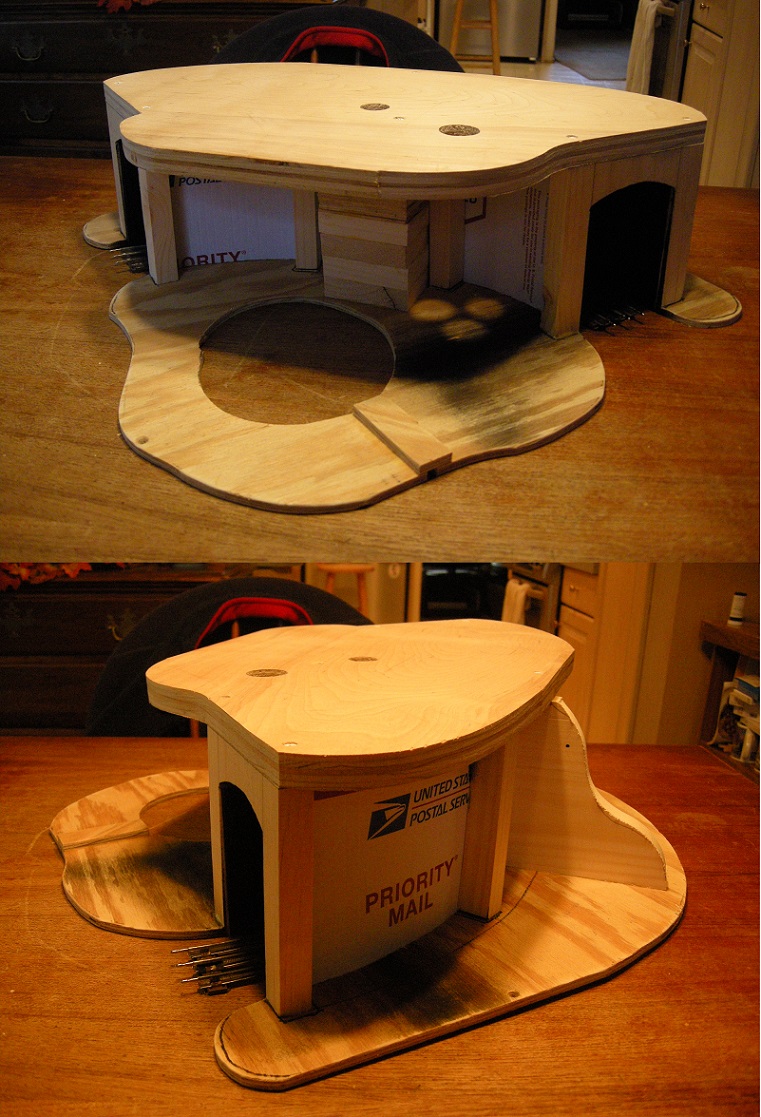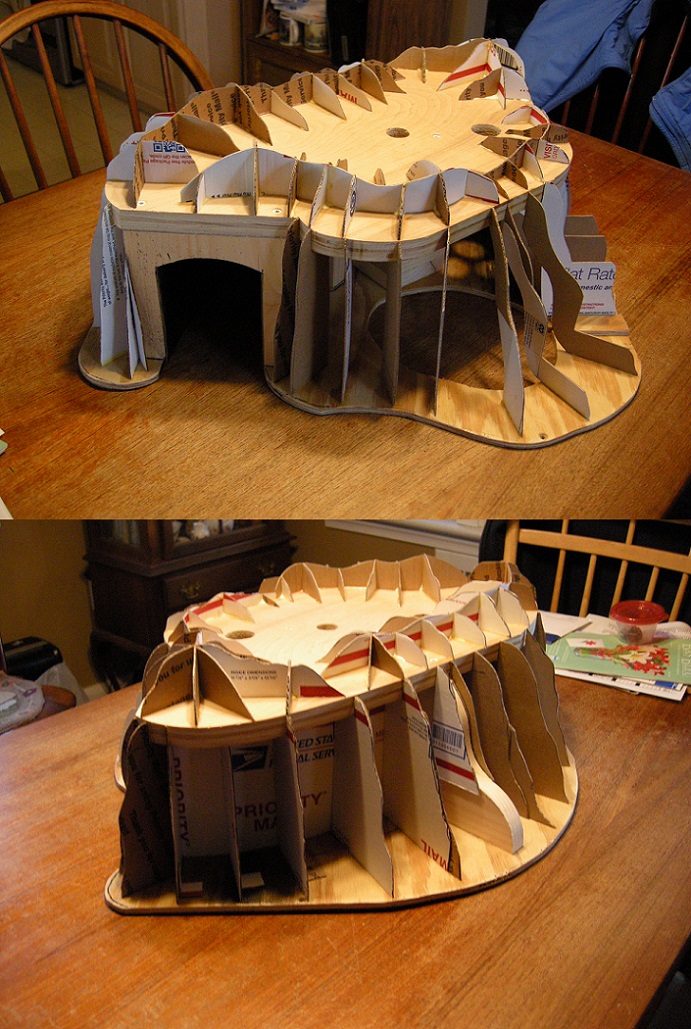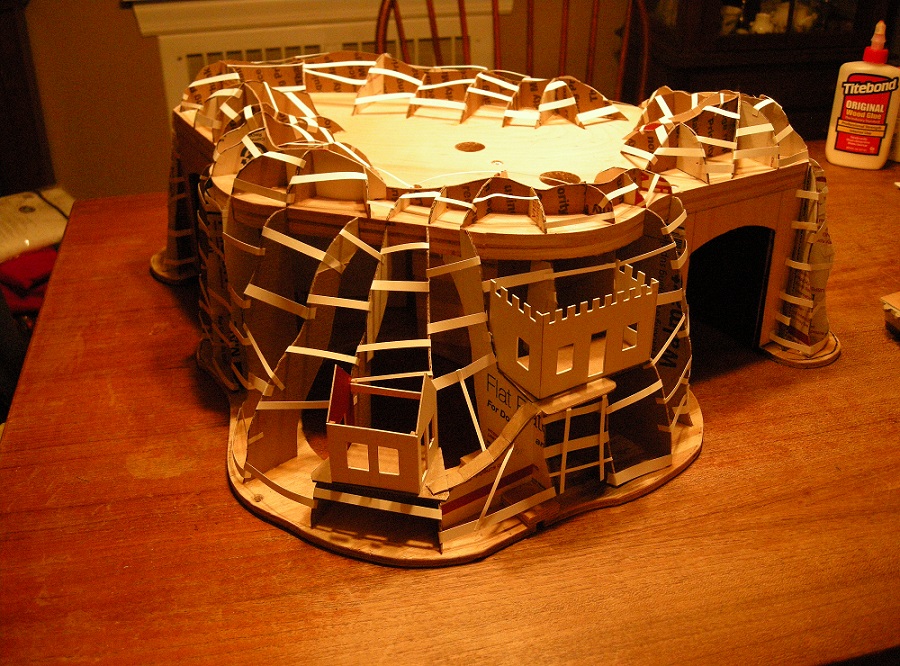Is this fun or what?
Okay, once absolutely dry, I was ready to paint. The painting process would be in two steps: (1) the overall mountain, then (2) the detailing of the buildings and the tunnel portals.
For the overall mountain, I used a few cans of flat or satin spray paint in green, tan, brown, gray, and white. I started with green around the base, than a mottling of green/brown/tan/gray going up the hillside. The top third of the slope and the entire top I sprayed white, trying to achieve a snow-capped mountain effect. There was some overspray on the building walls, but not much, and no worries as it's going to get hand-painted anyway. I gave the stone portal masonry a hand-painting using some gray acrylic craft paint I "borrowed" from the wife's stash. I left the joints between the blocks the lighter color for contrast:

The last thing to do in this step was detail/paint the buildings. They looked a bit drab, so I tried to think of things to do to dress 'em up. The one with the crenulated roof line, I added a strip of basswood around the top to look like a cornice or a ledge. I then gave it a couple coats of some salmon-colored craft paint (same source), followed by a couple coats of yellow for the smaller peaked-roof house.
One of the neat things about the the prewar Lionel tunnels was that some included both interior lights and small buildings on the exterior. There was a hole in the felt or the sheet-metal that allowed s a bit of the interior light to shine through, illuminating the windows of the small buildings. It's a neat effect if you're lucky enough to have seen one. I attempted to replicate the effect here by leaving an opening behind each building and putting translucent vellum paper in the windows. The mistake I made was not leaving easy access to the interior for an interior light. A string of mini-lights/LEDs would work, with the battery box on the outside to turn on/off. But I digress.
I've made a window pattern in Excel that I use to print windows. I've tried a number of different sheet-plastics and papers for printing them, but vellum paper seems to work the best. It's printable, it's translucent, and it's reasonably durable. I printed a couple sets along with doors, cemented them in, than made a roof for each. Since this is a Christmas themed project, I added some "snow" effects.
The last thing to do was to slather the whole thing with glitter. With Howard's help, I've developed an understanding of how best to do this. First, go with a coarse grade of material, not the fine stuff. Second, make sure you use white glitter; some of the stuff sold had green or pink bits in it and it doesn't look great. A nice course, highly-reflective, white glitter seems to work best. I painted the entire tunnel structure with undiluted white glue, then sprinkled it liberally with glitter. After a few minutes, I dumped off the excess, then sprinkled it all back on again. This I left to dry for a few hours. Once dry, I dumped off any remaining excess, brushed it lightly with a brush to knock off any loose bits, then called it done:
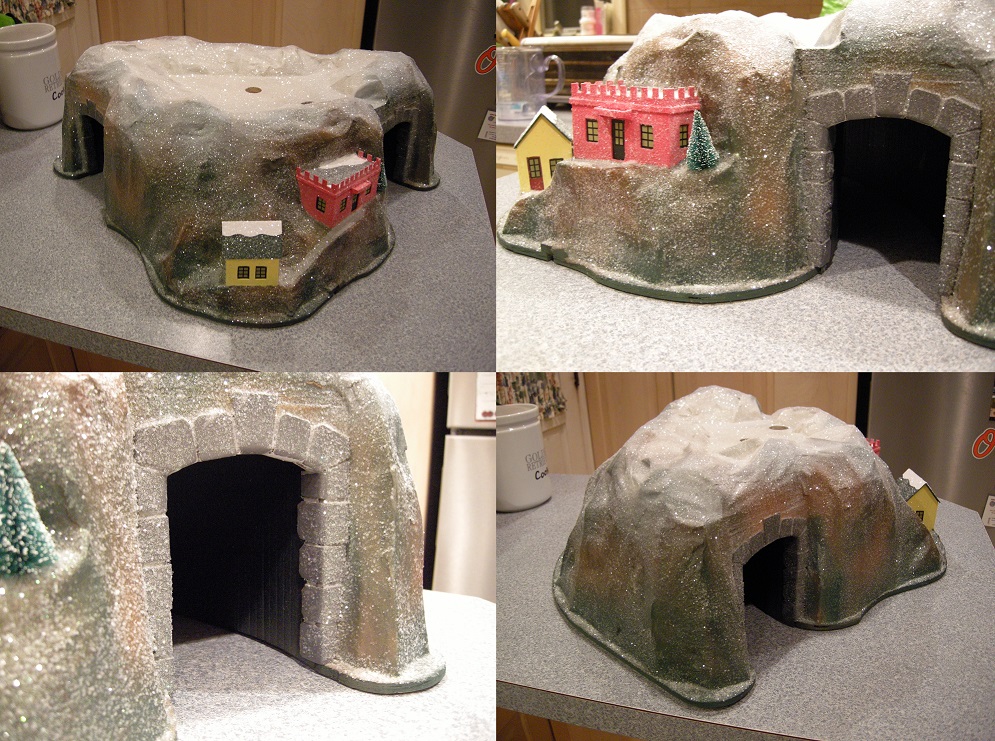
Fun project. Here it is in the village display:
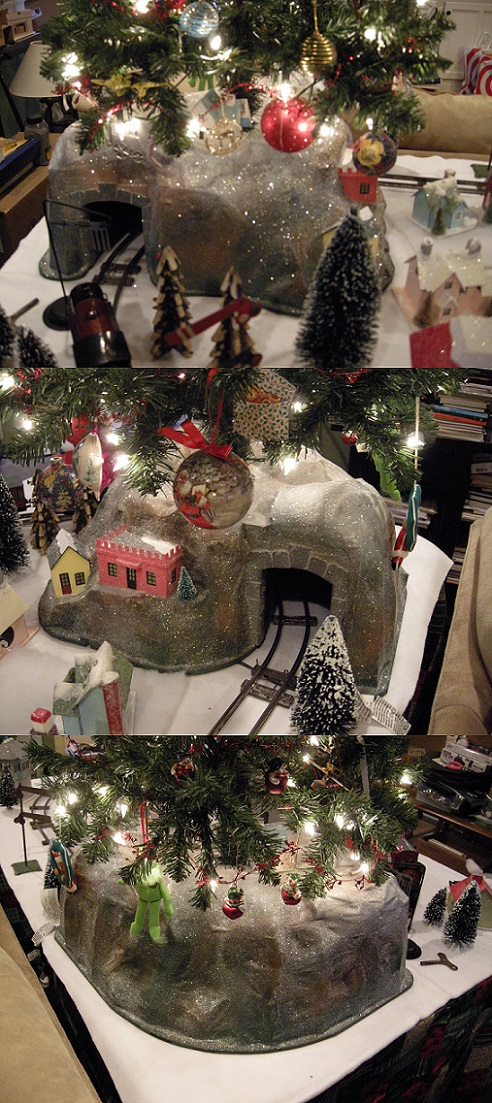

On to the next...









